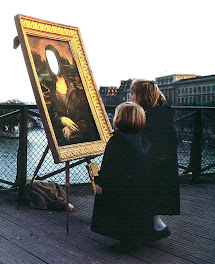Visitors listen to slam poet D' de Kabal at the Louvre in early November.
New art collectors are emerging from different parts of the globe and have pulled the art world away from the traditional centers of gravity in Europe and the United States.
The lines between high art versus popular culture and who consumes them seem to be blurring, according to some observers.
The traditional definition of "high art" -- referring to painting, sculpture, classical music, or opera -- descended from the eras of kings and aristocrats and carried connotations of wealth and elitism.
After the end of World War II, the era during which the United States came to the forefront of world art, this Eurocentric, elitist definition began to evolve, according to Sylvie Fortain, editor of Art Papers, a non-profit magazine that focuses on contemporary art.
Artists like Andy Warhol and Roy Lichtenstein, who appropriated imagery from popular culture like Campbell's soup cans and comic book strips in their work, blurred the lines between high and popular culture. (View a timeline of American art)
More recently, the emergence of the Internet and the rise of digital culture are removing what little distinction is left..."
Más, también de reportes recientes de CNN:
- Read more about the recent art boom
- Read more about the record-setting auctions
"Pressure is coming from throughout South America as well as throughout Asia, where monster museums are being built at an increasing rate with new collectors popping up all over the place." Auction houses Christie's and Sotheby's earlier this month generated $1 billion in sales, with records being set for 19 artists.



No hay comentarios.:
Publicar un comentario